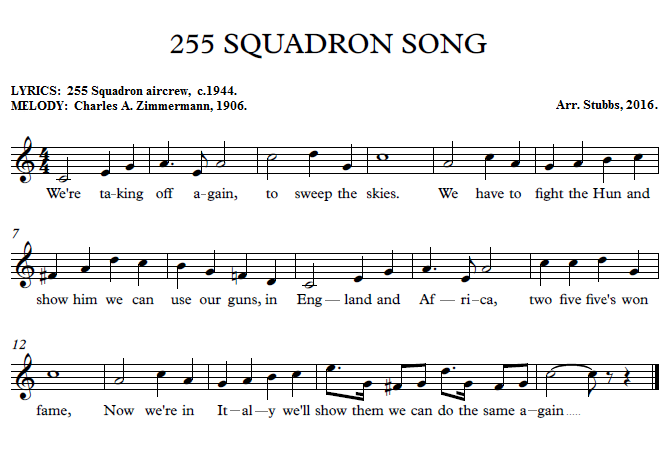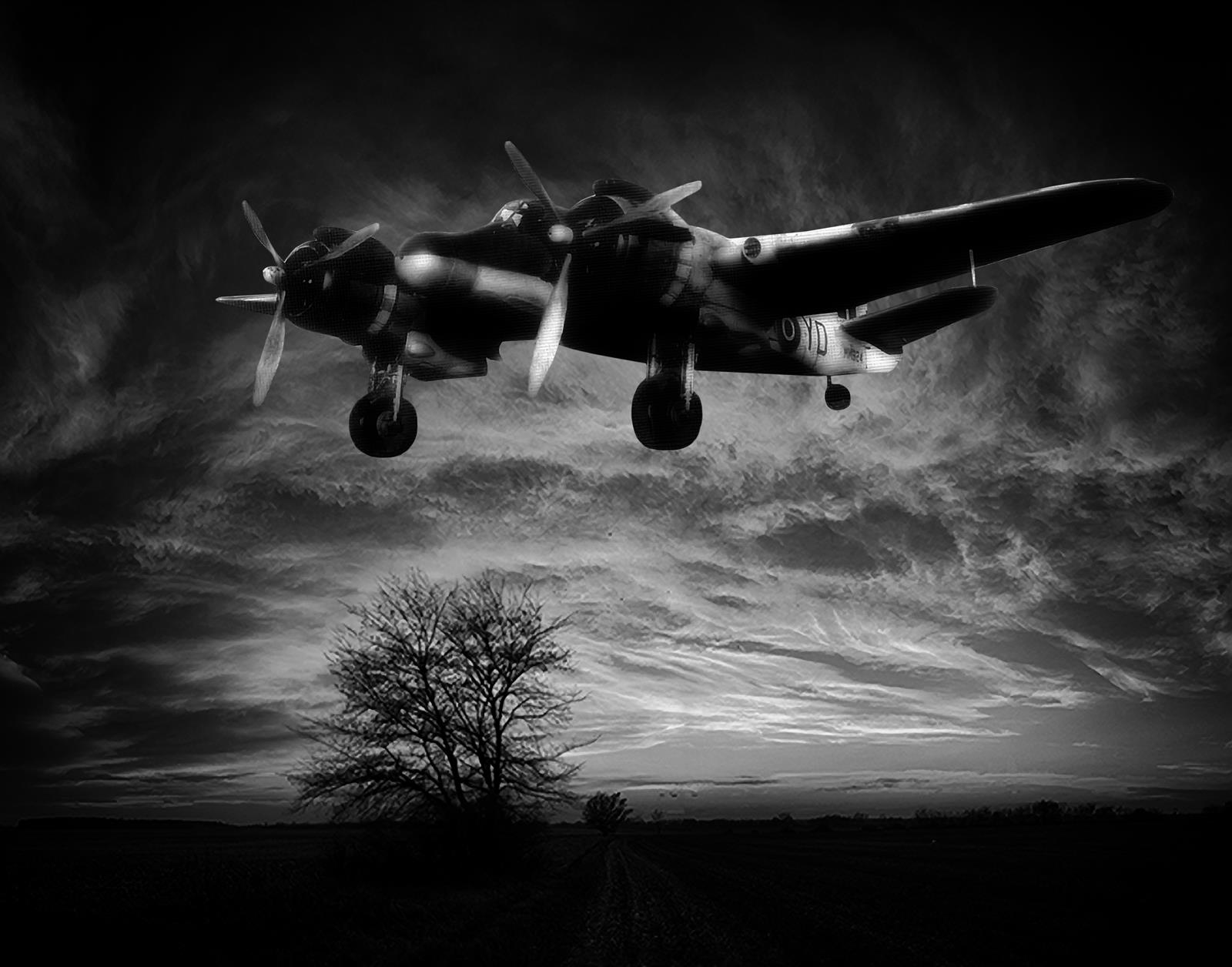Last updated: 03 January 2019, 15:31
The Squadron in Music and Art
including photographs and poetry
The proposal to adopt Ar Hyd y Nos
No anthem or march was ever formally associated with No.255 Squadron before disbanding in 1946. In 2014, a suggestion arose within 255 Squadron Association that the traditional Welsh folk tune
Ar Hyd y Nos should be adopted. The rationale for selecting this particular music went as follows:
- The distinctly Welsh nature of the piece reflects No.255 Squadron’s Welsh origins; the unit was founded at Royal Naval Airship Station Pembroke in 1918 and stayed in West Wales for the remainder of World War One. The CO was Captain Reginald Rhys Soar, DSC, who was in effect the first Squadron Leader – although the rank structure didn’t call him that in 1918. A resident of Yorkshire, Rhys was nevertheless something of a Welshman at heart (his mother was Welsh) and he is buried in Martletwy churchyard, just a few miles from the airfield where 255 was founded.
- The name of the piece dovetails precisely with the Squadron Motto, Ad Auroram. Put the two together and you get...
¦ Ar Hyd y Nos - Ad Auroram
¦ in translation from Welsh and Latin...
¦ All Through the Night - To the Break of Dawn.
- There are many differing words to the piece, Welsh and English, religious and secular, but most have a theme in common – the story of a Guardian watching over those who sleep through the hours of darkness. That seems highly appropriate for a squadron whose primary role in World War Two was night-time air defence against enemy bombing raids.
Sheet music for Ar Hyd y Nos
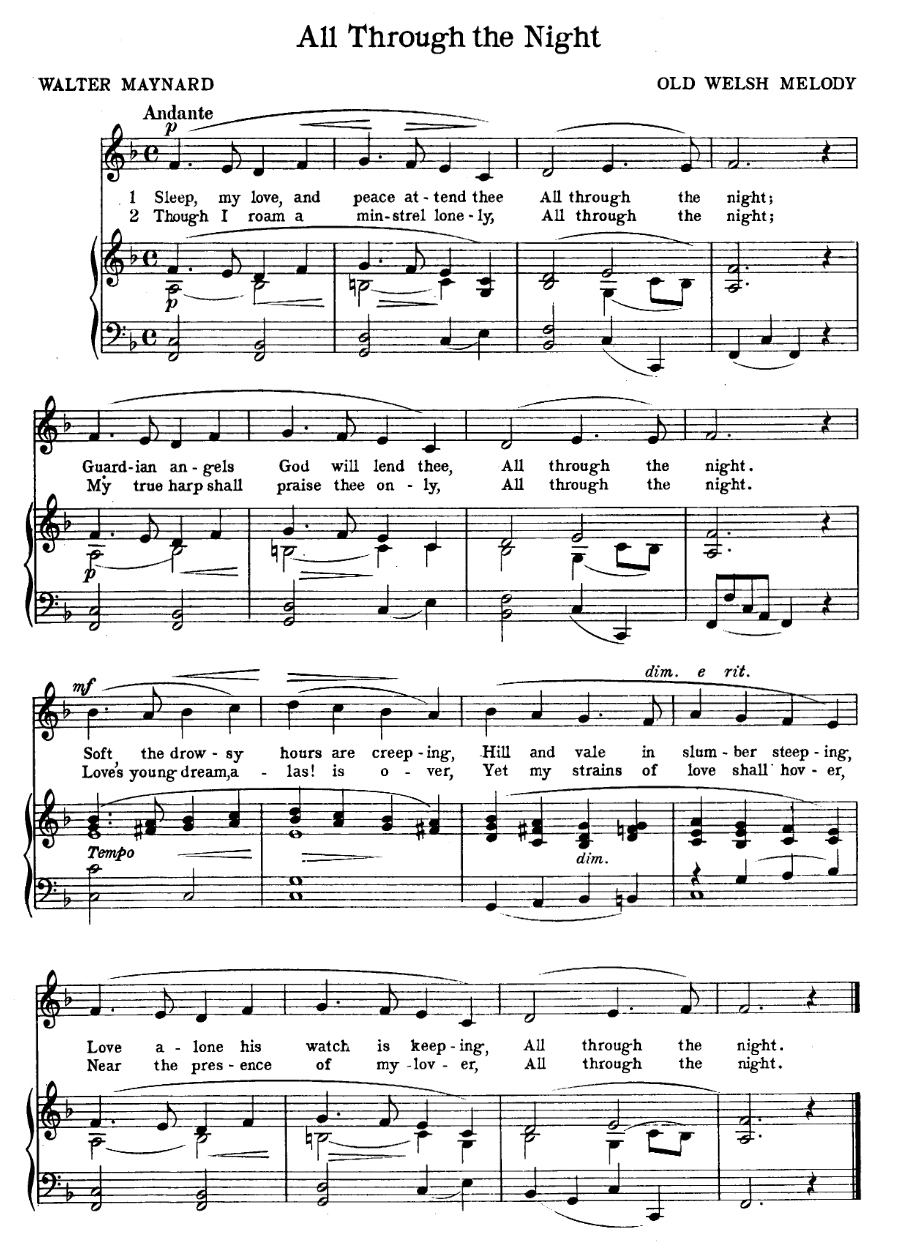 Out of copyright - Public Domain
Out of copyright - Public Domain
The melody comes from a Welsh folksong first documented in Edward Jones’ Musical and Poetical Relics of the Welsh Bards dated 1784. Numerous versions of the lyrics exist. Those above are attributed to “Walter Maynard”, published 1873 in Songs of Wales by Brinley Richards, Boosey & Co, London. Walter Maynard is believed to be a pen name of Thomas Willert Beale (1828–1894).
 |
Click on the music icon to hear Aled Jones singing Ar Hyd y Nos (in both Welsh and English) at St David’s Hall, Cardiff, in 2002. |
The ongoing debate about adopting Ar Hyd y Nos
In principle, the RAF appears willing to link this music to the squadron, notwithstanding that 255 was disbanded nearly 70 years before the suggestion was made. However, some descendants of squadron members are uneasy about retro-fitting this music – or any other – to the unit in which their fathers fought. As at 2015, debate is ongoing.
Contemporary music & sing-alongs at past reunions
At some of the early reunions, members of the Squadron used to give a rendition of a "255 Song" sung to the tune Anchors Aweigh. This march is off-limits for the purpose of being designated 255's official march because it is already the official march of the US Navy, but that shouldn't prevent it being sung on less formal occasions. The words, thought to have been lost, were rediscovered in early 2016 in the archive of the late Wing Commander C.L.W. Stewart.
We’re taking off again, to sweep the skies,
We have to fight the Hun and show him we can use our guns.
In England and Africa, 255’s won fame,
Now we’re in Italy we’ll show them we can do the same again.
Night after night we seek out for the kill
And Jerry dreads to know that way up high there lurks a Beau,
She’s all out for Victory, for that we must strive,
So when this war is won, remember then the Fighting 255.
A less contented picture is to be found in The Intruder’s Lament, intended to be sung to the tune Clementine. The lyrics are attributed to one 'Happy' Hopkinson, who appears to have been 118043 Acting Squadron Leader Harry Hopkinson, CO of 87 Squadron as at mid-July 1944. Also based at Foggia, 87 Squadron flew Spitfires with long range fuel tanks on daytime missions that mirrored 255’s night-time efforts at making a nuisance of themselves. The song first appeared in print in the 255 Squadron magazine Beau Gen, vol.4 no.24, p.3. Apparent typos and errors arising from oral repetition have been corrected.
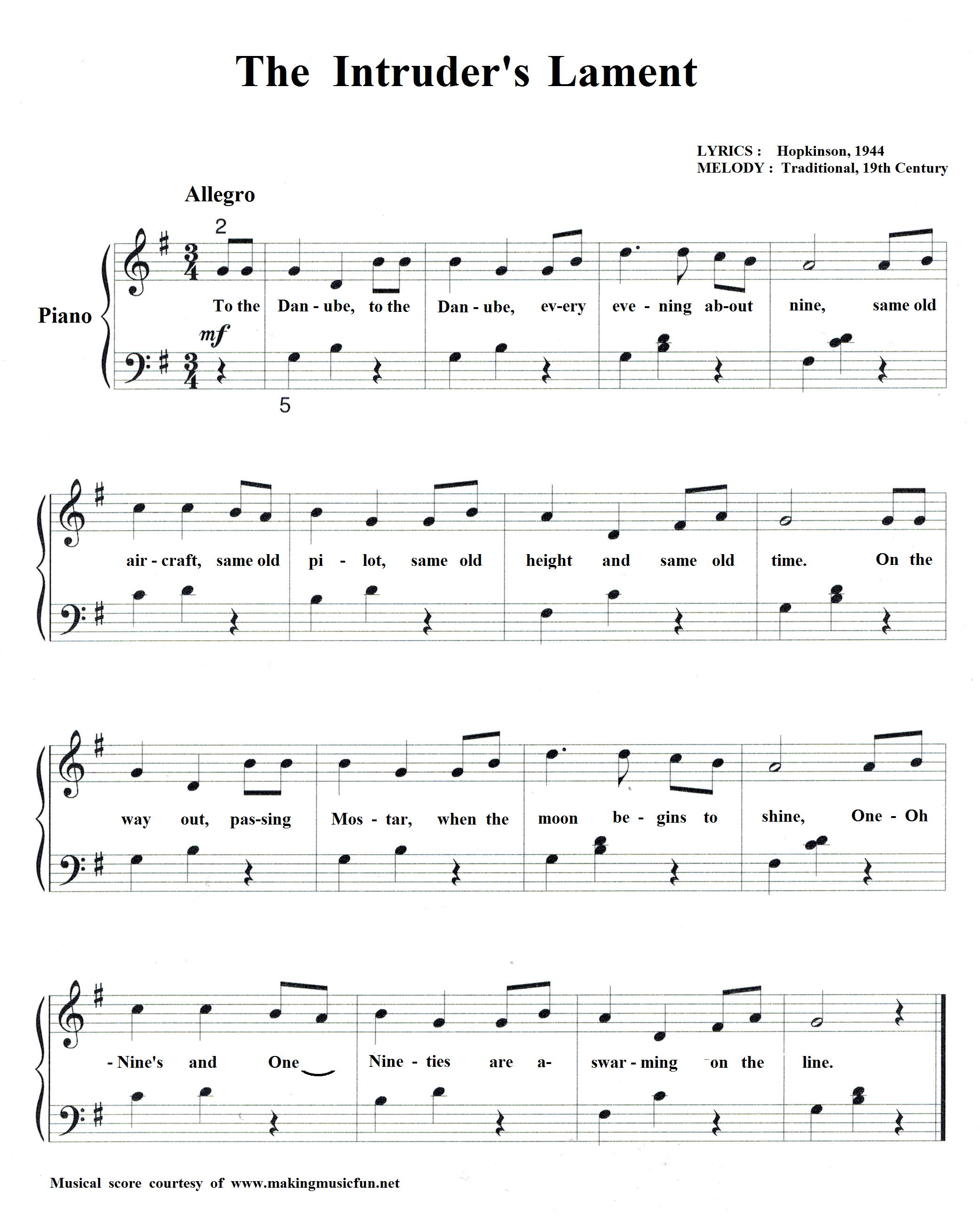
To the Danube, to the Danube,
Every evening about nine,
Same old aircraft, same old pilot,
Same old height and same old time.
On the way out, passing Mostar,
When the moon begins to shine,
109's and 190's
Are a-swarming on the line.
“Do three runs now,” said the C.O.,
“Making every one a hit.
“If you do you’ll go to heaven,
“If you don’t, you’re in the shit.”
On the way back, same old Fighters
And your fuel is running low,
How I wish I could see Foggia
In the rainstorm down below.
Oh, Group Captain! Oh, Group Captain!
We have told you thrice before...
We never want to go to
The Danube any more.
How we wish we were in H.Q.
Drinking coffees by the score.
Then we’d never have to go to
The Danube any more.
255 Squadron in Works of Art
The following two paintings illustrate night operations impossible to photograph at the time. A huge "thank you" is due to the artist David Bloomfield for his work on these images.
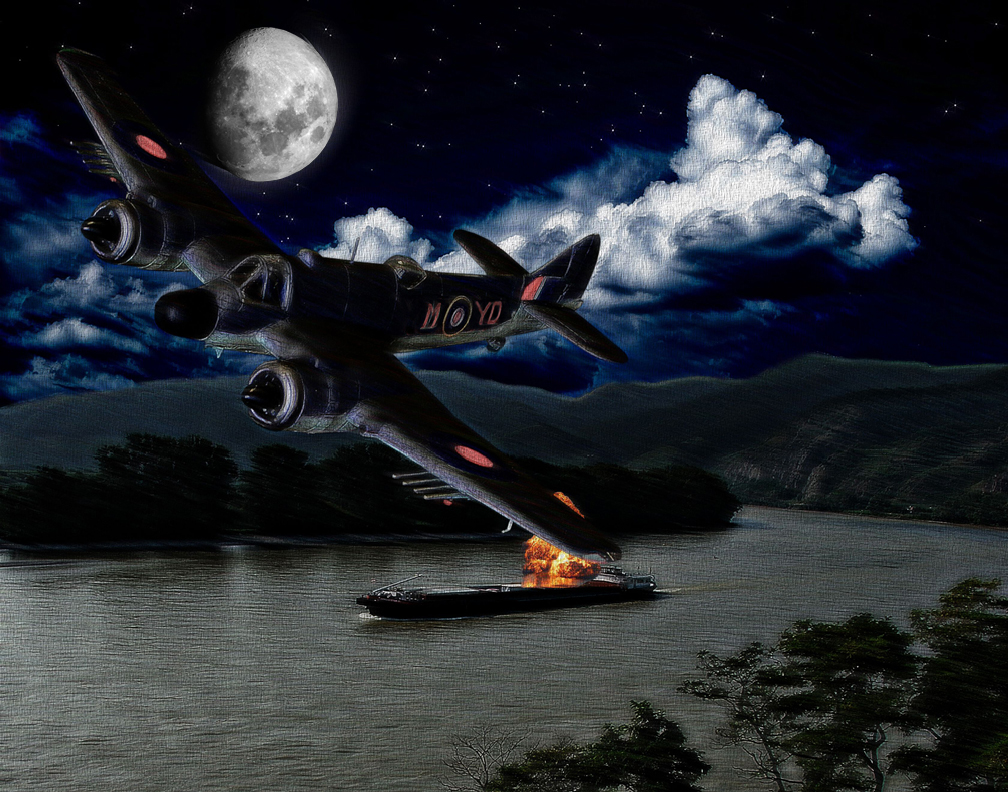 Attack on an oil barge carrying vital war supplies from the Romanian oilfields.
Attack on an oil barge carrying vital war supplies from the Romanian oilfields.
Over 100 such vessels were destroyed or seriously damaged by the Squadron
in 1944, an under-reported action which significantly degraded the Luftwaffe’s
ability to maintain fighter cover over the Reich.
A Mk.VI Beaufighter of the Squadron returns to Foggia Main at the break of
dawn. Note the distinctive nose cone shielding the centimetric radar equipment.
Our next image is a portrait of Flight Lieutenant Kevin T A O'Sullivan DFC, based on a photograph taken during his early days in the RAF (before he lost his hair!). The Mosquito in the drawing was based on a separate photograph of his aircraft which was taken at RAF Church Fenton in 1945 when Kevin was with No.125 (Newfoundland) Squadron.
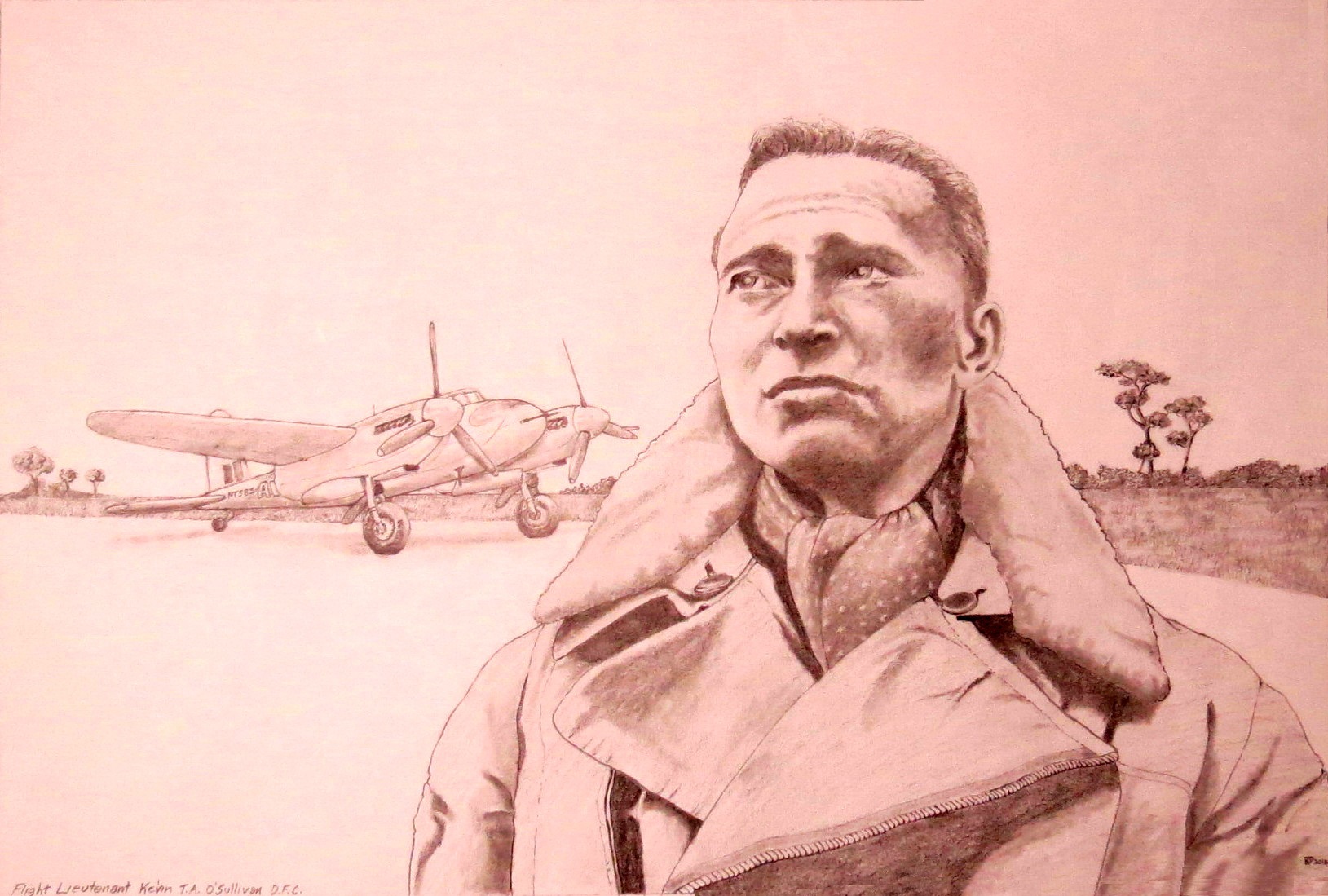 Drawn by Kevin’s son-in-law, Brian Pratt. Copyright ©2018.
Drawn by Kevin’s son-in-law, Brian Pratt. Copyright ©2018.
The following painting by Mark Postlethwaite depicts the encounter between N3333 and a Heinkel 111 over South Ferriby, Lincolnshire at 15:27 on Friday 7
th March 1941. Combat details at AIR50/98/1 and AIR50/98/2; the enemy aircraft was claimed as "Damaged". The RAF pilot was P/O Arthur Alexander Ballantine (1920-1944, known as Sandy) and the Air Gunner was at the time known as Chris McTaggart (1920-2012). Unlike Sandy, Chris survived the war, in later life emigrating first to Denmark and then to Canada where he was known as Chris Madsen. Prints are available to order, direct from
the artist’s website.
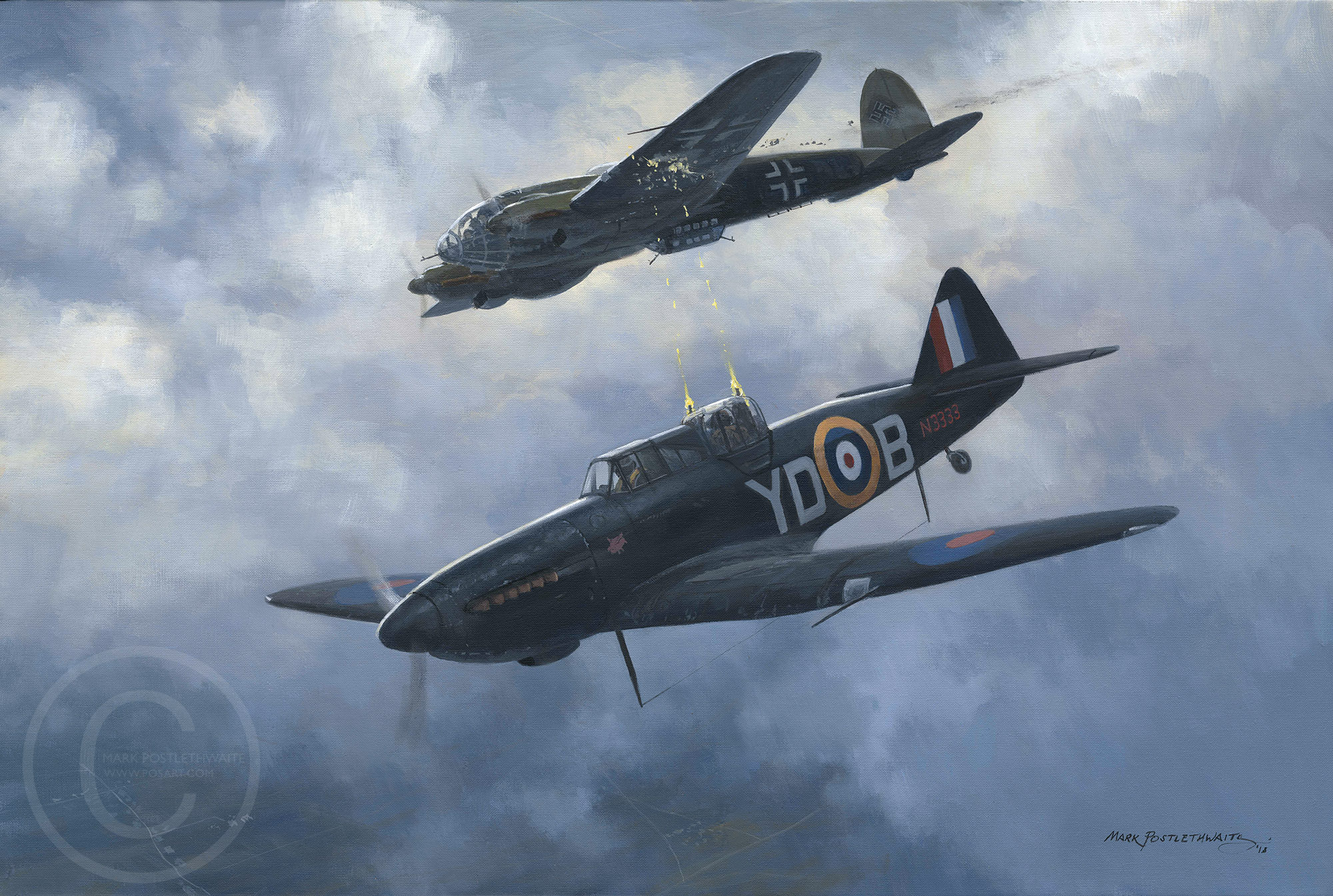 Combat over Lincolnshire by Mark Postlethwaite, GAvA. Copyright ©2018.
Combat over Lincolnshire by Mark Postlethwaite, GAvA. Copyright ©2018.
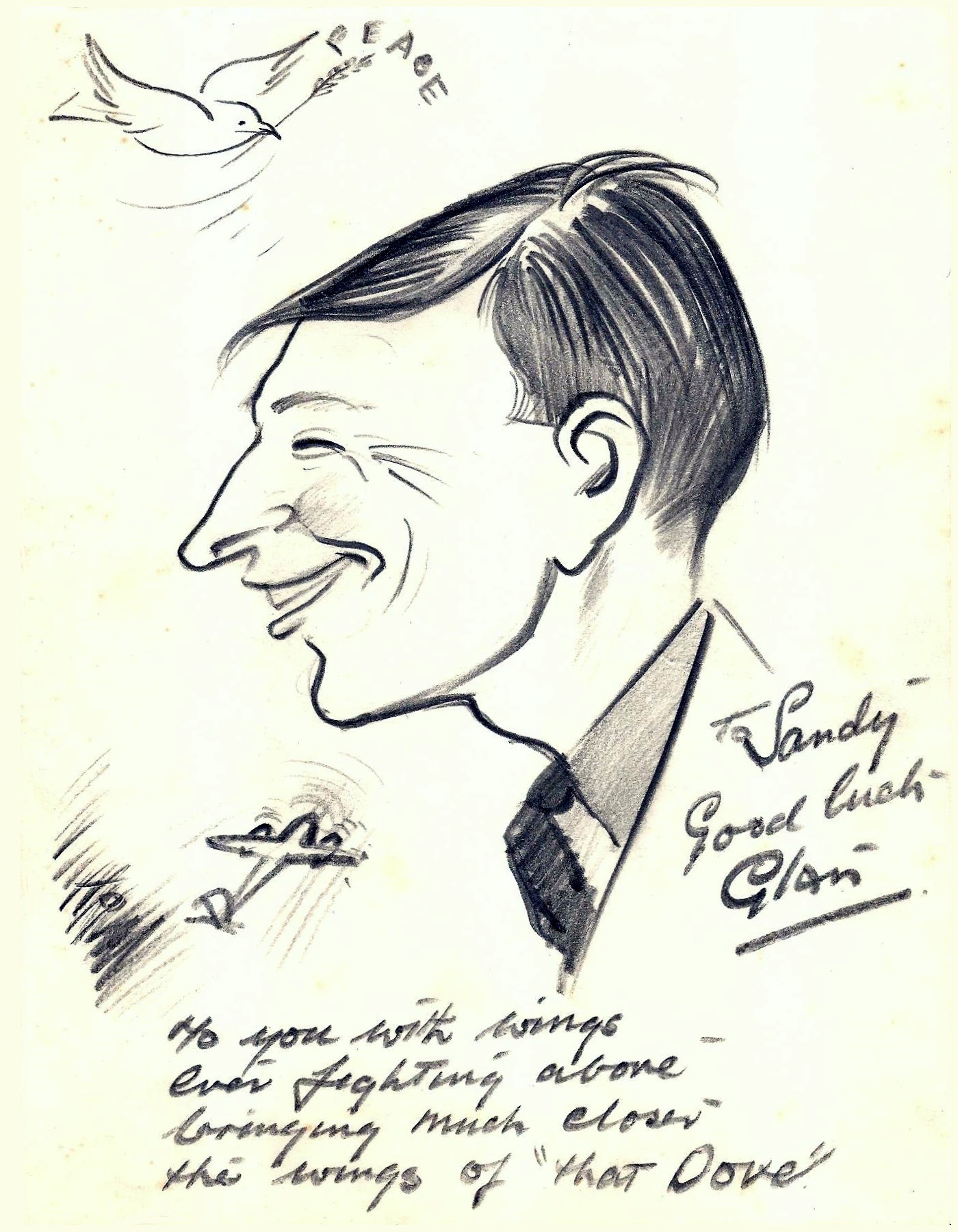 Caricature of Sandy Ballantine (pilot of N3333) by Glan Williams, drawn in 1941 and previously unpublished.
Caricature of Sandy Ballantine (pilot of N3333) by Glan Williams, drawn in 1941 and previously unpublished.
The poem "The Aviator’s Lament" alternatively titled "The Dying Airman"
This classic piece pre-dates not only No.255 Squadron but also the RAF itself.
The Airman’s Song Book[1] identifies the earliest version as originating in 1912 by way of an adaptation of
The Tarpaulin Jacket – a "tarpaulin jacket" being army slang for a body bag. The version set down here is offered in tribute to the members of the Squadron killed in non-combat incidents explained, with the benefit of hindsight, by the questionable aerodynamic characteristics and unreliable supercharger gearboxes of some of their aircraft.
A young aviator lay dying
At the end of a fine winter’s day
When to the surprise of his comrades,
These brave parting words he did say:
Take the manifold out of my larynx,
Take the butterfly valve from my brain,
Remove from my liver the crankshaft
And assemble the engine again.
Then go forth and get me a school bus,
And bury me out on the plain,
And get them to write on my tombstone
Some formulæ out of Duchesne.*
When the Court of Inquiry assembles,
Please tell them the reason I died
Was because I forgot twice iota
Is the minimum angle of glide.
And now I suppose I’ll be joining
The Flying Corps up in the sky.
Let’s hope that they’ve studied iota
And the wings that they give me will fly.
* Apparently a (then) highly topical reference to the theological writings of Louis Duchesne (1843–1922) on the subject of the Catholic Church’s absolution of sins upon death. The first edition in English translation was published 1910 in London by SPCK. Taken together with the reference to the school bus, this seems to imply a belief by the dying pilot that he had sinned by forgetting his basic tuition in aeronautics; also the expectation of absolution if Duchesne’s "formulæ" for divine forgiveness were followed. Quite why the sin was deemed to be of such magnitude as to warrant burial "out on the plain" (by implication unconsecrated ground) is at present unexplained.
These lines were written before the outbreak of World War One, so there was no expectation of temporary ("field") burial followed later by exhumation and re-burial in a War Cemetery. That process, known as "Grave concentration", was applied to the mortal remains of at least a dozen members of 255 Squadron in Algeria, Tunisia, Sicily, mainland Italy and Serbia.
Tribute photography
Here, we showcase modern photographs depicting places of interest in terms of the Squadron’s history. Further contributions are invited.
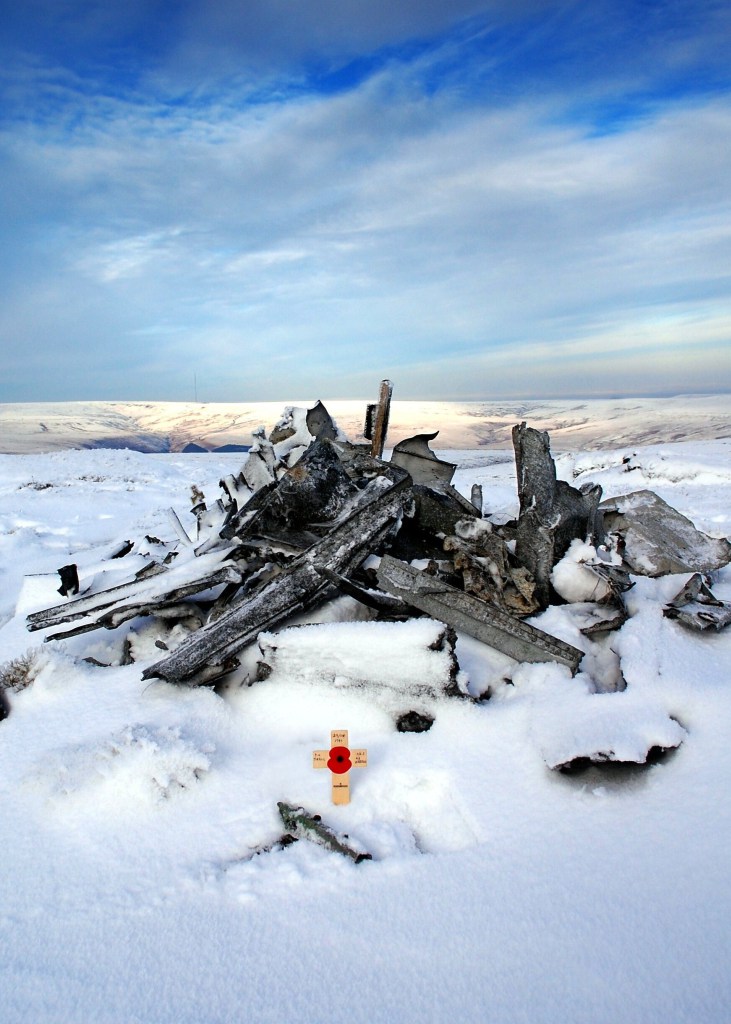 The site of the crash of N3378 on Bleaklow. Photographed by Ian Burgess in
The site of the crash of N3378 on Bleaklow. Photographed by Ian Burgess in
the winter of 2012/13 and originally published on the aircrashes.co.uk website.
A selection of other RAF-related music
The Royal Air Force March Past.
This stirring piece was composed in 1918 by the first Director of Music of the newly created Royal Air Force, Henry Walford Davies (1869–1941). Walford Davies was subsequently knighted (1922) and in 1934 succeeded Sir Edward Elgar as Master of the King’s Music.
Click to hear
The Royal Air Force March Past performed by the Band of the RAF Regiment.
The Spitfire Prelude
Click to hear Sir William Walton's
Spitfire Prelude (1943), played by the Band of the Welsh Guards.
The Battle of Britain March
The Eagle Squadron March (Nos.71, 121 and 133 Squadrons, Royal Air Force).
In 1942, British composer Kenneth J. Alford wrote the march
Eagle Squadron, in honour of the pilots of the Eagle Squadrons. The Eagle Squadrons comprised 3 fighter squadrons of the Royal Air Force formed early in World War II, with volunteer pilots from the USA. On 29 September 1942 the Eagle Squadrons were transferred to the USAAF.
Kenneth J. Alford was the pen name of Major Frederick Joseph Ricketts (1881–1945). Possibly his best-known military march is
Colonel Bogey.
Click to hear
Eagle Squadron performed by The Western Band of the Royal Air Force.
The Dam Busters March (No.617 Squadron, Royal Air Force).
Composed in mid-1950s by Eric Coates (1886–1957), this stirring march written in Elgarian form has achieved iconic status not only as the theme tune for the film
The Dam Busters but also as a lasting commemoration of Operation Chastise, the bouncing bomb raid on the great dams of the Ruhr.
Click to hear
The Dam Busters March performed by the Band of the RAF Regiment.
The RAF Regiment March.
The RAF Regiment’s band play their own Regimental March
Holyrood.
Citations and Footnotes
Click on the ^ symbol to return to the text you were reading.
| 1. ^ |
Ward-Jackson, C.H. and Lucas, L. (1945), The Airman’s Song Book, London : Sylvan Press, pp. v, vii, 2–4. Predates ISBN catalogue system. |
Copyright © 2014–2025. All rights reserved except where otherwise stated.




